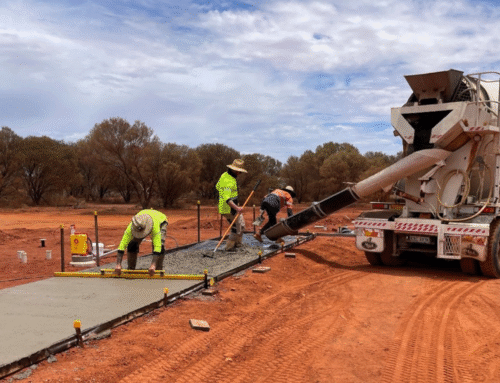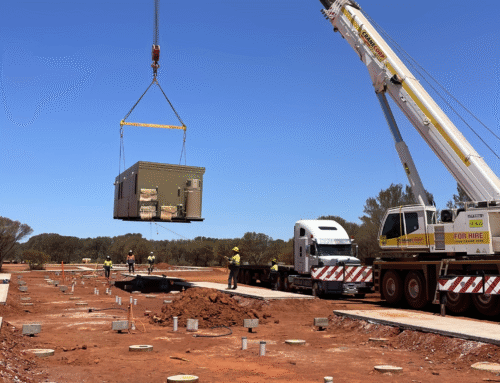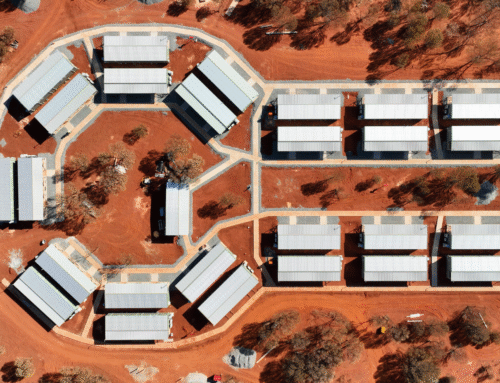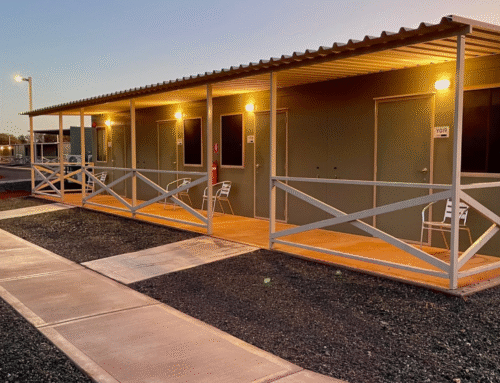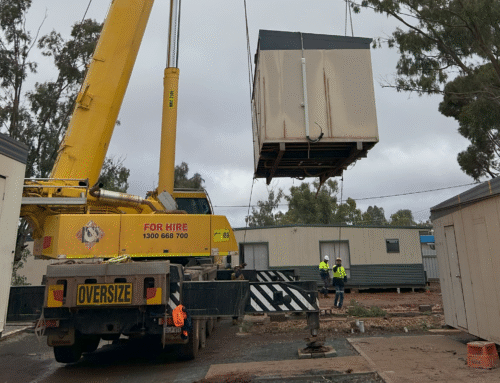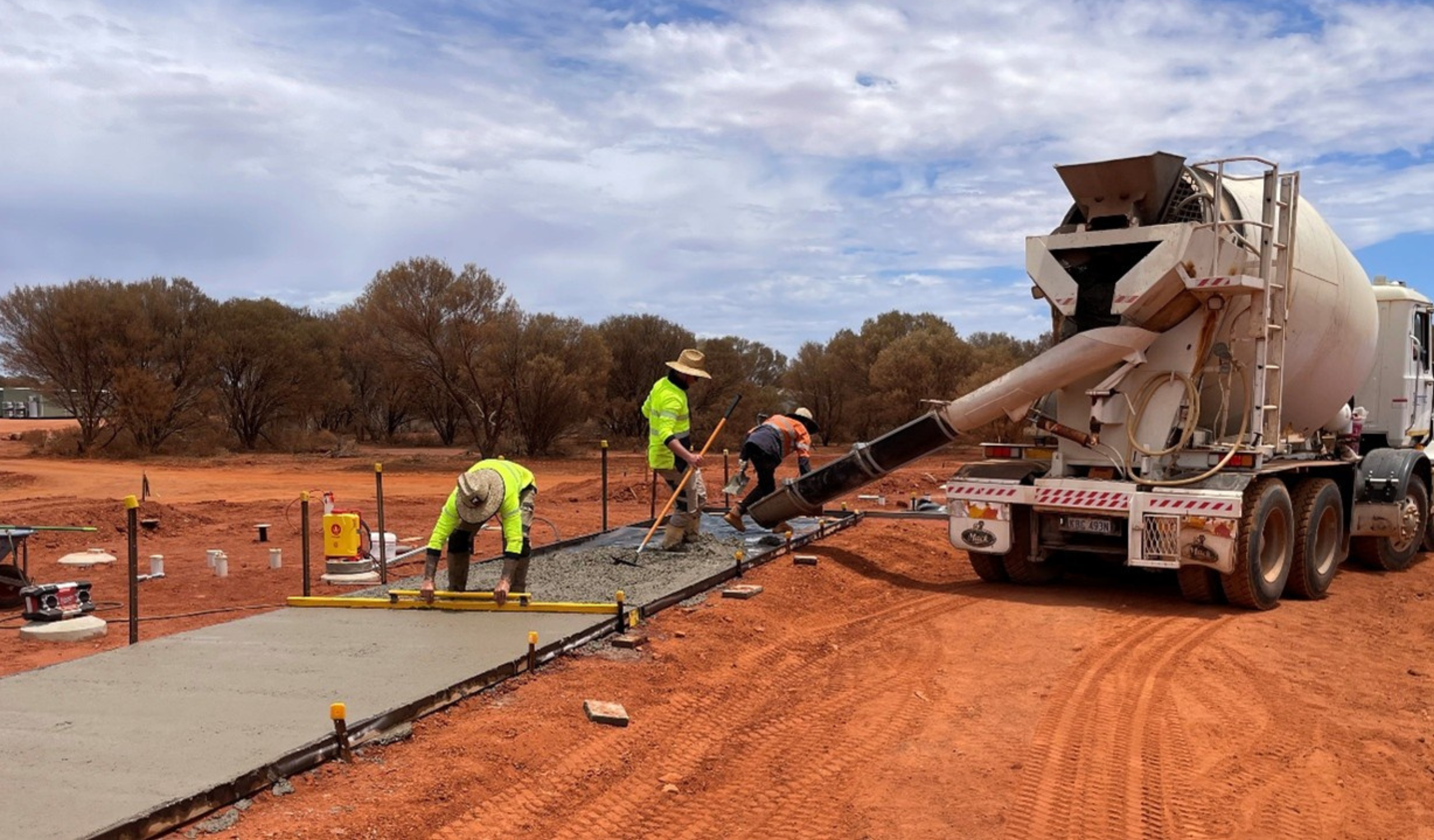Remote projects often have many moving parts – multiple contractors, tight timelines and harsh environments. In this mix, scope gaps can creep in. A scope gap is essentially a piece of work that falls through the cracks because everyone thought someone else was handling it. On a remote job, that gap can mean serious delays or costs, especially when your site is hundreds of kilometres from the nearest help. We’ve seen it happen: a modular building gets delivered, but who is hooking up the power? Or the buildings are in place, but where are the steps and decks that were “assumed” to be provided by someone else? In this post, we’ll discuss common scope gaps in remote construction and how RGWA’s way of working covers those bases that others might overlook.
What Are Scope Gaps and Why Do They Happen?
Simply put, a scope gap is an unassigned responsibility – work that wasn’t clearly allocated in contracts or plans. In remote Western Australian projects, some factors make scope gaps more likely:
- Multiple Contractors: It’s common to have one company supplying modular units, another doing earthworks, another handling electrical. With hand-offs between many parties, “grey areas” emerge. Each contractor focuses on their defined scope and sometimes an item that lies between scopes (or overlaps them) gets omitted. For example, the modular supplier might assume the client will handle foundations, while the client assumed it was included.
- Distance and Logistical Complexity: When a project is far away, minor oversights become major headaches. If you arrive on site and discover nobody arranged a crucial component (say, a wastewater pump or a communications tower), you can’t just get one delivered in an hour. The lead times and cost to fill that gap are magnified by the remoteness.
- Rushed Planning: Time pressures or incomplete planning can lead to gaps. Perhaps the project plan focused heavily on the big-ticket items (“deliver 50 rooms and a kitchen”) but forgot the interstitial pieces (like the plumbing connections or the fencing around a treatment plant). If it wasn’t documented clearly who does what, it might not get done at all.
- Assumptions from Past Experience: Different contractors have different assumptions. A Perth-based crew might assume a “standard” item is always by the client (like providing potable water supply), whereas on a mining site the expectation might be the contractor handles it. These mismatched assumptions can leave tasks orphaned.
The result of a scope gap is usually a last-minute scramble: trying to find a tradesperson or get materials out to site on short notice, or worst case, leaving something undone which could impact safety or operations. It’s far better to catch and prevent these gaps from the start.
The High Cost of Scope Gaps in Remote Projects
Scope gaps are problematic anywhere, but in remote projects the stakes are higher:
- Delays and Downtime: If an essential piece of work isn’t done, it can halt the entire project. On a city site, you might find a quick workaround; on a remote site, you might be stuck waiting days (or weeks) for the right person or part to arrive. That idle time is expensive – your crew is on standby, or worse, you have to demobilise and remobilise later.
- Transport and Mobilisation Costs: Filling a scope gap after the fact often means paying a premium. Imagine discovering you need a licensed electrician to finish connections: flying one out at short notice, or mobilising a team again, will blow out the budget. We’ve heard of cases where a forgotten fuel line hookup for generators cost tens of thousands extra, because a specialist team had to make a separate trip to the remote site.
- Safety and Compliance Risks: Some gaps can compromise safety. If nobody installed the handrails on elevated walkways because it wasn’t in any contract, you now have a hazard. Or if emergency lighting wiring was overlooked between camp units and the main board, the facility isn’t compliant with regulations. In remote areas, rectifying these can be more than just a financial cost – it could risk lives or cause the site to be non-operational until fixed.
- Reputation and Client Trust: When scope gaps occur, someone has to tell the client that something was missed. That’s never a comfortable conversation. It can erode the confidence the client has in the project team. In tight-knit industries like mining or regional infrastructure, one botched project due to “we forgot to do X” can have long-term repercussions on getting future work.
In short, scope gaps in the bush can be show-stoppers. The goal is to identify and cover every part of the scope proactively, so the project isn’t derailed by an “oops, who was supposed to do that?” moment.
Common Areas Where Others Drop the Ball
Through experience, we’ve identified a few areas that frequently get overlooked by less integrated approaches:
- Foundations and Footings: Believe it or not, sometimes the job of building a foundation for a modular structure is left undefined – the building supplier might drop the units off but not touch the ground works. We’ve stepped into projects where prefab units were delivered and sitting… on temporary blocks for weeks because no one had poured the footings. At RGWA, we ensure the foundation work is scoped and completed as part of the build, because a building without a proper foundation is a disaster waiting to happen.
- Utility Connections: Modular building vendors often deliver units with “provisions” for connections – but who actually connects the water, power and sewer on site? In our turnkey projects, we handle that through our plumbing and electrical teams. Others might assume the client’s site electrician will do it. If that wasn’t agreed upfront, suddenly you have buildings with no lights or flushing toilets on day one. We cover this gap by default, so when we finish, everything is live and commissioned.
- Civil Touches and Finishings: This includes things like final grading for drainage, gravel paths, steps, ramps and skirting around modules. These elements make a site safe and usable (no one wants to wade through mud between buildings after rain, or have doorways with a big drop). Yet they might not be in the core contract if a company was just hired to “install buildings.” We incorporate these works because a project isn’t truly done until you can use the facilities normally. For example, we always clarify who’s providing and installing any stairs or verandas on portable units – we include it in our scope, whereas we’ve seen others treat it as an extra.
- Final Compliance and Handover Tasks: Things like testing and commissioning of systems, as-built documentation and even site clean-up can be afterthoughts. We cover those as a matter of practice – performing full testing on electrical and plumbing systems, providing completion reports and compliance certifications and doing a “builder’s clean” of the site (removing debris, smoothing out ground, etc.). It’s not glamorous work hauling away construction debris or compiling manuals, but it’s part of a complete job. We’ve seen prior contractors skip this, leaving a literal (and paperwork) mess for the client – something we refuse to do.
By anticipating these areas, we make sure they’re in our project plan. It’s about not assuming “someone else will do it” – instead, we either do it ourselves or make it explicit who will, so nothing is left undone.
How RGWA’s Integrated Approach Fills the Gaps
Remote Group WA was basically founded on the idea of covering all the bases. Our model of self-performing multiple trades and services is a direct response to the scope gap problem. Here’s how our way of working prevents gaps:
- One-Stop Shop for Trades: RGWA brings every trade to the job – concrete, civil, electrical, plumbing and even scaffolding. Because our team handles it all in-house, there’s no confusion over “who’s responsible for X?” If it’s part of building and making a facility operational, we consider it our responsibility. This eliminates the blame game between separate contractors. For example, if we’re installing a wastewater system and also building the housing units, our plumbing team and building crew coordinate internally – we don’t wait for someone else to figure it out.
- Holistic Scoping in Planning: When we plan a project, we actively look for those in-between items. Our project managers go through a mental (and often literal) checklist: is anything not covered? They draw from our collective experience of past projects – remembering that, say, on one job the client expected us to also install the telecoms cabling between buildings, so we ensure that’s discussed. We would rather over scope (and have the client tell us “no, we have that covered”) than under scope and miss something crucial.
- Accountability – One Hand to Shake: With our turnkey approach, the buck stops with us. Clients have one point of contact responsible for the full scope, so there’s clear accountability. If something is not done, they know who to call – but our goal is they never need to, because it’s already been handled. This not only covers scope gaps but also builds trust; clients can relax knowing one competent team is covering the project end-to-end.
Delivering Peace of Mind by Covering “Others Don’t”
Ultimately, avoiding scope gaps is about delivering peace of mind. Our industries in WA – mining, energy, regional infrastructure – are challenging enough without surprise omissions. By covering those often-forgotten elements, RGWA aims to make projects predictable and complete.
We’re not just about putting up buildings fast – we ensure nothing is left incomplete when we’re done. From the concrete slab underfoot to the lightbulb on the ceiling (with a test sheet proving it works), every detail is handled. In the end, integrated scope isn’t about doing more work – it’s about doing the whole job so the client can use their facility immediately, rather than chasing contractors to finish things. In remote projects, that makes all the difference.


